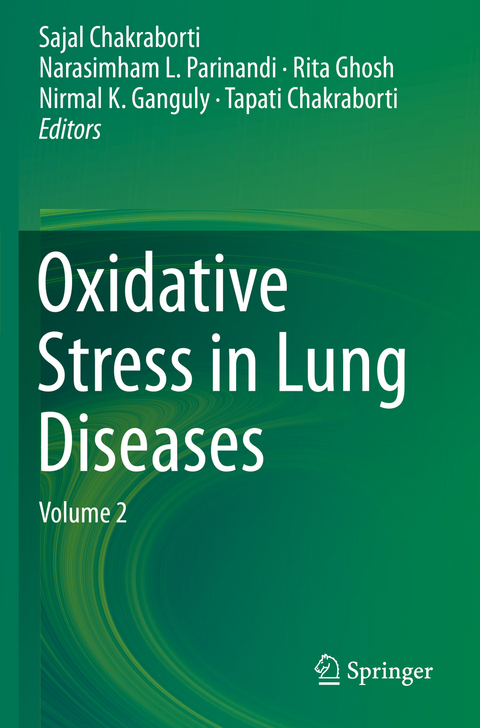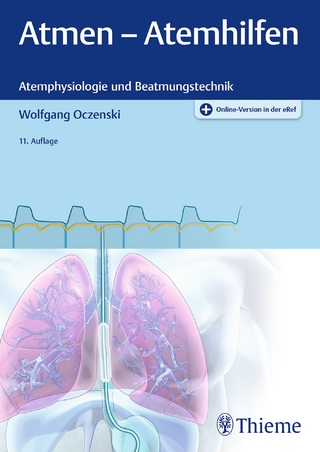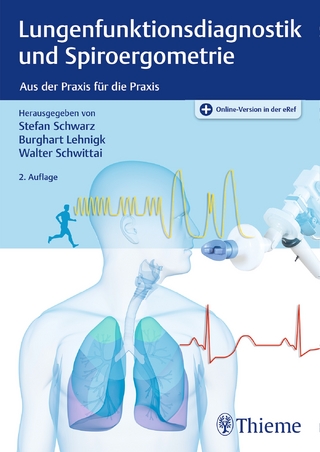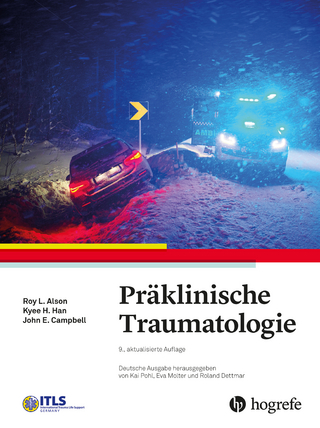
Oxidative Stress in Lung Diseases
Springer Verlag, Singapore
978-981-329-368-7 (ISBN)
Prof. Sajal Chakraborti is a Professor of Biochemistry at the University of Kalyani, West Bengal, India. His research covers the role of proteases, oxidant and Ca2+ signalling in the pathogenesis of a variety of diseases. Prof. Chakraborti did is PhD from Calcutta University (1982) and DSc from Kalyani University (2014). He did his post- doctoral research at Johns Hopkins University, University of Utah and New York Medical College. He received DBT-Senior overseas research award for his research at the Brain Institute, University of Florida, Gainesville (1998-1999). He has been engaged in teaching and research in biochemistry for the past 40 years. He has published more than hundred original papers, 22 book chapters, 15 review articles and edited seven books published by Springer. Dr. Tapati Chakraborti is a Professor of Biochemistry at the University of Kalyani, West Bengal, India. Her research focuses on the determination of the Mechanisms Associated with the Roleof Proteases in the Oxidant-mediated Cellular Dysregulation of Pulmonary Vascular Endothelial and Smooth Muscle Cells. She received Ph.D. from the CSIR-Indian Institute of Chemical Biology (affiliated to Jadavpur University, Kolkata in the year 1992 and did post-doctoral research at the Brain Institute, University of Florida, Gainesville, Florida during 1999-2002. Dr. Tapati Chakraborti has been actively involved in teaching and research for the past 30 years. She has published more than 80 original research papers, 18 book chapters, and 12 review articles. She also edited a book entitled “Proteases in human diseases” published by Springer in the year 2017. Prof. Rita Ghosh is a Professor of Biophysics in the Department of Biochemistry and Biophysics, University of Kalyani, Kalyani, West Bengal, India. She did her MSc in Physics from Calcutta University and PhD from Saha Institute of Nuclear Physics, Kolkata. She did her post doctoral research at the Swiss Institute of Experimental Cancer Research, Lausanne, Switzerland (1991-1993). Her research covers mainly in the area of cell biology.. She has been engaged in teaching and research for more than 30 years. She has published above 40 original research papers, review articles and books chapters. Prof. Nirmal K. Ganguly was the Director General of Indian Council of Medical Research (ICMR), New Delhi and the Director of PGIMER (Chandigarh) and National Institute of Biologicals (Noida). Dr. Ganguly is currently a Distinguished Professor, Global Health Strategies at New Delhi, India and the Chief Advisor of the Policy Centre for Biomedical Research, Translational Health Science & Technology Institute, Faridabad, India and at Ganga Ram Institute for Postgraduate Medical Education & Research (GRIPMER). Dr. Ganguly has published over 780 research papers and has mentored 130 doctoral students leading to the fulfillment of Ph.D. dissertations as theDoctoral Advisor/Joint Advisor. Currently, Dr. Ganguly also focuses on the Immunological Basis of Cancer as a major area of his research. Dr. Ganguly is a Fellow of the Imperial College Faculty of Medicine, London, the Royal College of Pathologists, London,the International Academy of Cardiovascular Sciences, Canada, the Third World Academy of Sciences, Italy, and the International Medical Sciences Academy, New Delhi. Dr. Ganguly is also a Fellow of all the National Academies of Sciences. He has received more than 119 awards, including 8 International and 111 National Awards. He has been honored with the prestigious Indian National Padma Bhushan Award presented to him by the President of India, on 26th January, 2008 in the field of Medicine. Dr. Narasimham L Parinandi is currently an Associate Professor in Department of Internal Medicine and Division of Pharmacology, The Ohio State University, Columbus, Ohio. Dr. Parinandi earned his Ph.D. (1986) at the University of Toledo, Toledo, OH, USA. He did his post doctoral research (1986-90) at the Hormel Institute, University of Minnesota, where he was associated with Prof. Harald Schmid (a celebrity in the area of lipid biochemistry) and Prof. Ralph T. Holman (Member of the National Academy of Sciences, USA). He was a research scientist at the Johns Hopkins University School of Medicine (1998-2002). Dr. Parinandi also collaborated with Dr. Louis J. Ignarro, a recipient of the 1998 Nobel Prize in Physiology (for signaling properties of nitric oxide). He has published 120 original research papers, reviews, and book chapters, and edited a book on Free Radicals and Antioxidant Protocols with Prof. William Pryor, the legendary Free Radical and Lipid Peroxidation Scientist. Dr. Parinandi is an Associate Editor of Cell Biophysics & Biochemistry (Springer). Dr. Parinandi has teaching and mentoring experience of more than 37 years in the US universities and has mentored over 75 students in his laboratory at 4 major US universities.
Part A.- Chapter 1. The effects of oxidative stress on the pulmonary surfactant and the role of lipids in this scenario.- Chapter 2. Oxidative stress in experimental models of acute lung injury.- Chapter 3. Potential of mesenchymal stem cells in modulating oxidative stress in the management of lung diseases.- Chapter 4. Role of NADPH oxidase induced oxidative stress in matrix metalloprotease-mediated lung diseases.- Chapter 5. Oxidative stress mechanisms in the pathogenesis of environmental lung diseases.- Part B.- Chapter 6. Oxidative stress induced mitochondrial dysfunction and asthma.- Chapter 7. Regulation of antioxidant Nrf2 signaling, an important pathway in COPD.- Chapter 8. Role of smoke-induced oxidative stress in pathogenesis of chronic obstructive pulmonary disease.- Chapter 9. Oxidative stress in obstructive and restrictive lung diseases.- Chapter 10. The use of ozone as redox modulator in the treatment of the chronic obstructive pulmonary disease.- Chapter 11. TRP channels, oxidative stress and chronic obstructive pulmonary disease.- Chapter 12. Paraquat induced oxidative stress and lung inflammation.- Chapter 13. Environmental, occupational and cancer drug induced oxidative stress in lung fibrosis.- Part C.- Chapter 14. Respiratory syncytial virus-induced oxidative stress in lung pathogenesis.- Chapter 15. Reactive oxygen species: Friends or foes of lung cancer?.- Chapter 16. Roles of long non-coding RNAs in lung cancer.- Chapter 17. modulator of therapeutic response in non small cell lung carcinoma.- Chapter 18. old story, new modalities!.Part D.- Chapter 19. Oxidative stress and therapeutic development in lung cancer.- Chapter 20. Regulation of oxidative stress by nitric oxide defines lung development and Diseases.- Chapter 21. Epidermal growth factor receptor: promising targets for non-small cell lung cancer.- Chapter 22. Oxygenated lipid products in COPD and asthma: a clinical picture.
| Erscheinungsdatum | 15.01.2021 |
|---|---|
| Zusatzinfo | 52 Illustrations, color; 13 Illustrations, black and white; XVI, 488 p. 65 illus., 52 illus. in color. |
| Verlagsort | Singapore |
| Sprache | englisch |
| Maße | 155 x 235 mm |
| Themenwelt | Medizinische Fachgebiete ► Innere Medizin ► Pneumologie |
| Naturwissenschaften ► Biologie ► Biochemie | |
| Naturwissenschaften ► Biologie ► Mikrobiologie / Immunologie | |
| Naturwissenschaften ► Biologie ► Zellbiologie | |
| ISBN-10 | 981-329-368-3 / 9813293683 |
| ISBN-13 | 978-981-329-368-7 / 9789813293687 |
| Zustand | Neuware |
| Informationen gemäß Produktsicherheitsverordnung (GPSR) | |
| Haben Sie eine Frage zum Produkt? |
aus dem Bereich


